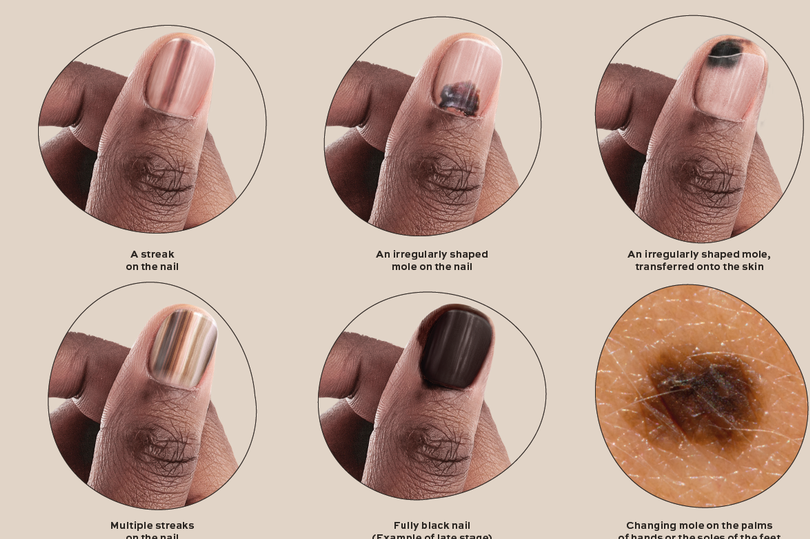Doctor lists symptoms of lesser-known cancer as 'focus sharpened'

Each May further light is shone on skin cancer in a bid to raise awareness of the disease and also educate members of the public who may be going about their day-to-day lives undiagnosed. But a type of skin cancer that’s often left out of the conversation is acral melanoma.
That's why charity Melanoma UK is making it a focus this year, with its new Beauty Spotters campaign. The campaign aims to encourage people to look out for the signs of acral melanoma, which is the most common form of skin cancer in black and brown skin.
Mark Rawden, CEO of Melanoma UK, said: “Beauty Spotters is our launch campaign for Melanoma Awareness Month this year. As a charity, we are expanding our efforts beyond traditional discussions of solely sun-related skin cancers. Our focus has been sharpened around not just raising awareness but campaigning for behaviour change to increase the likelihood of melanoma being spotted amongst all people.”
But what exactly is acral melanoma, and what symptoms should people be looking out for? A health expert shares everything you need to know.
What is acral melanoma and what causes it?
According to skin cancer expert, GP and medical director of Cosmedics Skin Clinics UK, Dr Ross Perry, acral melanoma appears on the soles of the feet, palms of the hands or under the nails.
“It is a relatively rare type of melanoma that can affect anyone, but is more common in people with darker skin and of Asian descent. As with most types of skin cancer caused by UV sun exposure, acral melanoma is not related to sun exposure but often down to genetics.
“Unfortunately, acral melanoma, due to where it occurs, is harder to be noticed – unlike a changing mole on the body – and therefore it can spread far quicker and is seen as one of the more dangerous types of skin cancer, with death rates higher than any other forms of melanoma.”
Who is most at risk of getting it?
Anyone can get acral melanoma, however it is more common in people with a darker skin tone, such as those who are Hispanic, Black and Asian. It is also more common in older generations, Dr Perry explained.
What are the signs and symptoms of acral melanoma?
The signs of acral melanoma include a changing spot on a mole which is found on the foot or hand.
“A streak on the nail which worsens and has damaged the fingernail, an irregular changing growth on the hand or the foot which looks unusual in colour, texture and growth, a thickened unusual patch which is growing on the sole of the feet or the palm of the hand,” said Dr Perry.
“Quite often people think they may just have a bruise, a simple wart or blood blister and just aren’t aware it could be acral melanoma – so always get it checked by your GP.”

How do you treat it?
“As with any type of skin cancer or melanoma, an early diagnosis is the best scenario, so it’s important to check the soles of the feet and palms of the hands for any changes. If in doubt, check it out with your GP or dermatologist,” said Dr Perry.
“If caught in the early stages it can often be removed surgically. In more advanced cases, patients may need a lymph node biopsy and based on the results of this a treatment plan can be drawn up depending on whether the cancer has spread.”

 Yahoo News
Yahoo News 
